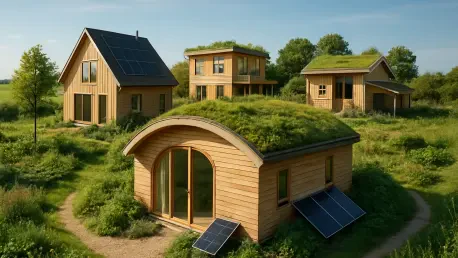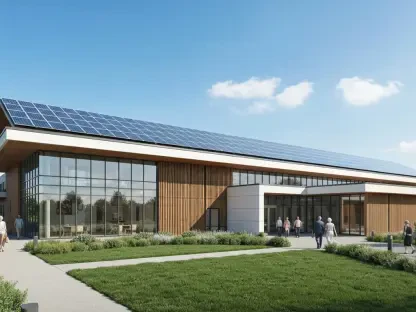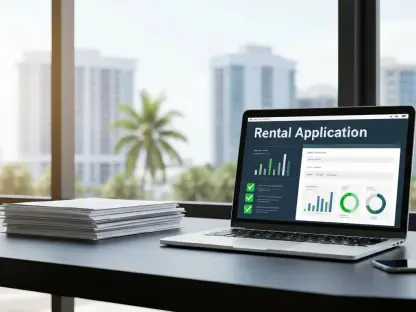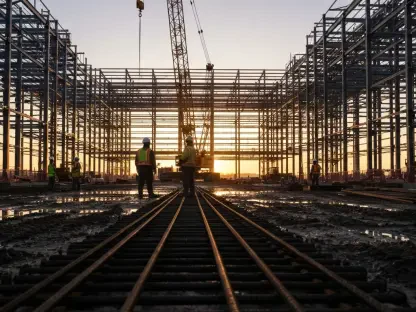In a world where housing shortages collide with the urgent need for environmental stewardship, a quiet revolution is unfolding in East Yorkshire, painting a vivid picture of hope. Imagine a community where homes not only shelter families but also drastically cut energy costs and carbon footprints, redefining the essence of affordable living. This is the reality taking shape in Hornsea, where a groundbreaking partnership is setting a new standard for what affordable housing can achieve. With the dual crises of affordability and climate change pressing down on local communities, this project offers a beacon of hope, proving that sustainability and accessibility can indeed go hand in hand.
The Urgency of Sustainable Housing in a Strained Market
The UK housing crisis has reached a tipping point, with millions struggling to find affordable places to live while the planet demands greener solutions. Recent studies indicate that over 4.2 million households in the UK are in need of social housing, a number that continues to grow. At the same time, the construction sector accounts for nearly 40% of global carbon emissions, making the push for eco-friendly building practices more critical than ever. The question looms: can housing developments address both affordability and environmental impact without compromise?
This dual challenge is particularly stark in regions like East Yorkshire, where demand for homes outstrips supply, leaving many families in precarious situations. Sustainable housing isn’t just a trend; it’s a necessity to ensure long-term community resilience. Projects that prioritize energy efficiency and low-cost living are becoming vital tools to combat these intertwined issues, setting a precedent for how developers can respond to modern demands with innovative thinking.
A Wider Lens on Housing and Green Innovation
Zooming out to the national level, the UK faces a shortfall of over 1 million homes, with government targets for Net Zero by 2050 adding pressure to build responsibly. East Yorkshire, with its mix of rural and coastal challenges, exemplifies the struggle to balance growth with environmental care. Here, sustainable development is gaining traction as a core strategy, driven by partnerships that align on both social and ecological goals, showing how local efforts can contribute to broader ambitions.
Collaborations like the one between Lovell Partnerships and Together Housing are pivotal in this shift. Their work demonstrates a commitment to integrating green solutions into affordable housing, aligning with national policies aimed at reducing emissions. By focusing on projects that cater to diverse needs while prioritizing eco-conscious design, such initiatives are carving a path toward a future where housing serves both people and the planet.
Unveiling the Hornsea Project: A Model of Eco-Friendly Design
At the heart of this movement is the Cliff Road development in Hornsea, East Yorkshire, where 66 affordable homes are being constructed through a joint effort by Lovell Partnerships and Together Housing. This project stands out for its thoughtful mix of housing types, including two-, three-, and four-bedroom homes alongside bungalows designed specifically for residents over 55. Such diversity ensures that the community caters to a wide range of family structures and life stages, fostering inclusivity.
Sustainability takes center stage in the design, with each home equipped with air source heat pumps and solar PV panels to minimize energy use and costs. Beyond the buildings themselves, the development includes community-focused features like children’s play areas, expansive green spaces, and private gardens, all aimed at enhancing quality of life. Additionally, 26 of these homes are available through shared ownership, providing a crucial stepping stone for first-time buyers in a challenging market.
The attention to detail in balancing environmental responsibility with practical living needs makes this initiative a standout. Off-road parking and accessible layouts further ensure that the neighborhood isn’t just sustainable on paper but also functional for daily life. This blueprint offers a tangible example of how modern housing can address immediate needs while building toward long-term ecological goals.
Insights from the Leaders Driving Change
Behind the success of the Hornsea development lies a shared vision articulated by key figures in the partnership. David Ward, Managing Director for the North at Lovell Partnerships, emphasized the significance of this collaboration, stating, “Delivering affordable housing that also champions sustainability is at the core of what drives us. Working with aligned partners amplifies the impact we can make in communities like Hornsea.” His words reflect a deep pride in creating homes that meet pressing local demands.
Echoing this sentiment, Dai Howells, Assistant Director of Development at Together Housing, highlighted the broader mission, saying, “This isn’t just about constructing houses; it’s about nurturing thriving, future-ready communities. Our joint focus on innovation and care sets a standard for what housing can achieve.” The backing of Homes England funding further validates the project’s credibility, positioning it as a replicable model for other regions and developers aiming to merge affordability with green practices.
Scaling the Success: Lessons for Other Communities
The Hornsea project offers valuable insights for developers, local authorities, and planners looking to emulate this approach. A critical starting point is forging partnerships with organizations that share a commitment to both sustainability and accessibility, ensuring that goals remain aligned throughout the process. Such collaborations can pool resources and expertise, making ambitious projects more feasible and impactful.
Integrating energy-efficient technologies, such as solar panels and heat pumps, into standard building designs is another actionable step that can significantly reduce environmental footprints. Equally important is designing with diversity in mind, accommodating various age groups and household sizes to build inclusive neighborhoods. Securing funding or incentives, as seen with Homes England’s support, can also bridge financial gaps, enabling the creation of homes that are both affordable and eco-friendly. These strategies provide a practical framework for scaling sustainable housing across different regions.
Looking ahead, the focus should remain on adapting these principles to local contexts, ensuring that solutions are tailored to specific community needs. Engaging residents in the planning process can further enhance outcomes, creating spaces that truly resonate with those who will call them home. This model, rooted in partnership and innovation, holds the potential to transform housing landscapes far beyond East Yorkshire.
Reflecting on a Milestone Achievement
Looking back, the collaboration between Lovell Partnerships and Together Housing in Hornsea marked a significant stride in addressing housing challenges through sustainable means. Their joint effort to build 66 eco-friendly, affordable homes showcased how aligned visions could yield tangible benefits for communities. The integration of cutting-edge technologies and inclusive design elements stood as a powerful testament to what was possible when innovation met purpose.
As a forward-looking consideration, stakeholders across the housing sector were encouraged to build on this foundation by prioritizing partnerships that champion both affordability and environmental care. Exploring new funding avenues and advocating for policies that support green building practices emerged as vital next steps. By continuing to push boundaries, the industry could ensure that every new home built contributed to a more sustainable and equitable future for all.









